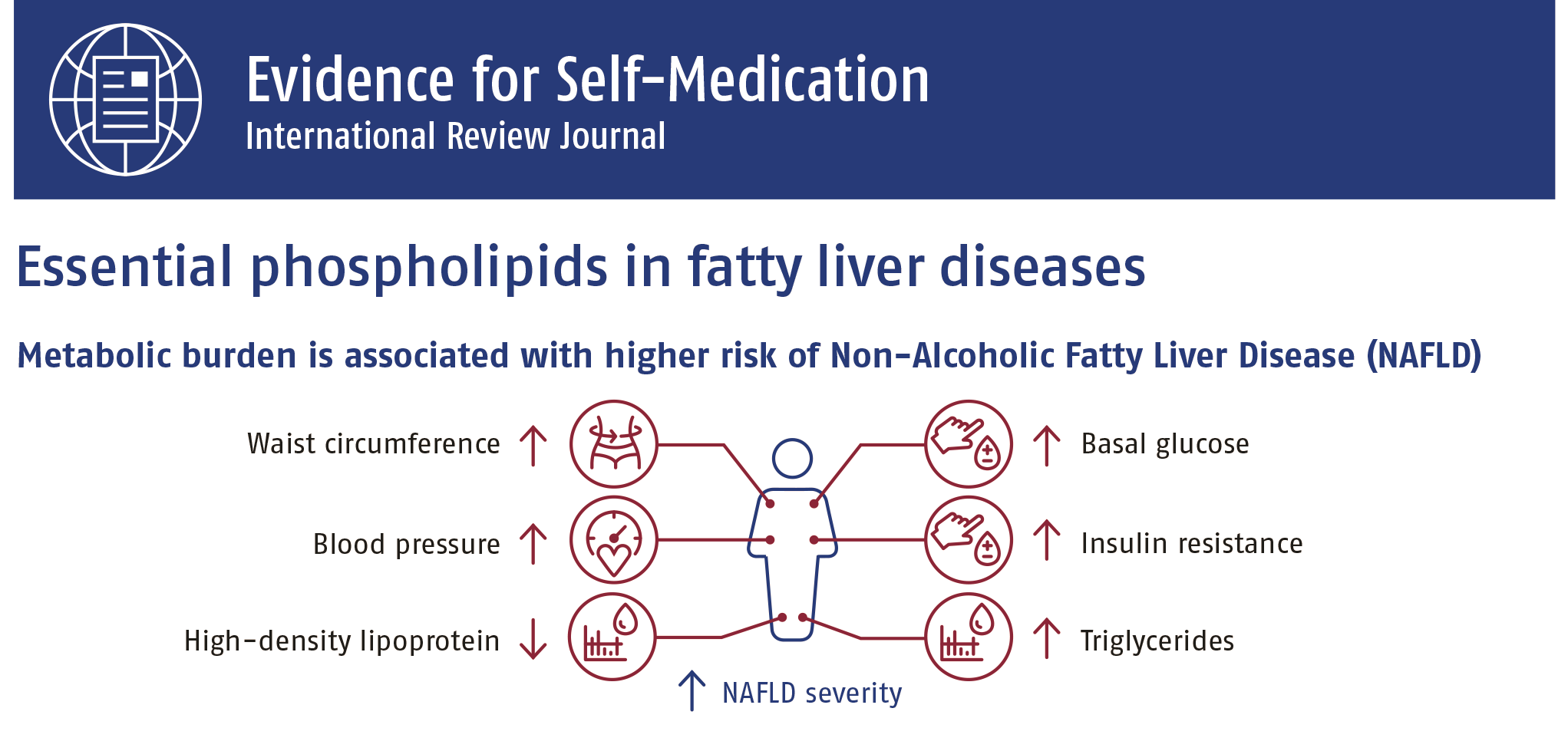Numerous metabolic processes take place in the liver, such as protein synthesis including the production of clotting factors, or gluconeogenesis. Hepatocytes store carbohydrates in the form of glycogen as well as fats as a reservoir of energy, which is readily available when needed. Another important function of liver cells is the detoxification and biological degradation of xenobiotic substances.
The liver is also an organ of importance in the immune system. As a filter between the intestine and the systemic circulation, the liver can detect and break down bacteria, dead cells or harmful foreign matter. These actions are carried out by various immunocompetent cells, such as a large number of macrophages (Kupffer cells). The contribution to systemic immunity is also crucial, because hepatocytes produce 80–90% of the proteins needed for humoral immunity [1].
Fatty liver diseases
Non-alcoholic fatty liver disease (NAFLD) – in common with alcoholic liver disease (ALD) – has various causes such as obesity, alcohol consumption and diabetes. The symptoms such as fatigue, dyspepsia and upper right abdominal discomfort, are non-specific and easily overlooked. The consequences of untreated fatty liver disease can be serious. Fat deposition in the liver cells (steatosis) can lead to oxidative stress with chronic inflammatory reactions and the development of fatty liver hepatitis (steatohepatitis). If the disease is not recognised and not adequately treated, hepatic cirrhosis or even hepatocellular carcinoma can develop. In addition to physical exercise, a reduction in body weight and a balanced diet, effective drug-based approaches to treatment are therefore of great interest. The literature review presented here investigated the clinical effectiveness and safety of essential phospholipids in fatty liver diseases.
Treatment of fatty liver diseases with essential phospholipids (EPL)
Essential phospholipids form a double layer of cellular and subcellular membranes and control their fluidity and biological activity (Fig. 1). The efficacy of EPL in the treatment of liver disease has been confirmed by the ability of some of its molecular components to integrate into damaged portions of liver cell membranes (hepatocytes), thereby improving the liver‘s ability to regenerate and also increase fluidity and function of hepatocyte plasma membranes. EPL have antioxidant, anticholestatic, anti-inflammatory, antifibrotic and regenerative properties.
Fig. 1. Essential phospholipids can be incorporated as constituents of cell membranes of hepatocytes and thereby improve cellular function through an increase in membrane fluidity, which facilitates transmembrane exchange and receptor functioning (based on Gundermann et al. 2016)
The indication for administration is the improvement of subjective health problems resulting from toxic or nutritional damage to the liver (alcohol, medication, improper diet, and unhealthy diet leading to overweight, obesity and hyperlipidemia), alcoholic or nonalcoholic fatty liver disease (AFLD, NAFLD) and inflammation of the liver (hepatitis). However, the use of EPL does not compensate for the consumption of hepatotoxic substances, such as alcohol, and also does not replace a comprehensive lifestyle adjustment – reducing excessive adiposity in overweight and obesity.
The usual recommended daily dose of EPL for children 12 years of age and older and for adult patients is 3 x 600 mg (1800 mg). The duration of treatment is not limited in time. Improvement in serum enzymes in 17 patients with fatty liver have been shown after 20 days of treatment. Compared with the pretreatment values mean serum gamma-GT activity was significantly lowered after 1, 3 and 6 months of EPLs therapy, whereas in the control group (placebo) the deviations were not statistically significant [2].
The only contraindication to EPL is hypersensitivity to the active substance or to any of the excipients (e.g. soybean oil). Drug interactions are rare. However, interactions of EPL with anticoagulants cannot be ruled out. Sometimes the dose adjustment of the anticoagulant might be necessary. Uncommon side effects are stomach upset such as nausea or vomiting, diarrhea and soft stools and abdominal distension. Very rare side effects are allergic reactions such as rash and hives.
In their literature review, Gundermann et al. evaluated studies from MEDLINE, EMBASE, COCHRANE LIBRARY as well as publications in national – generally gastroenterological – journals. Of the studies published between 1988 and 2014, only those with highly-purified extract of soybean seeds (Glycine max (L.) Merr.) with a standardised content of 72% to 96% phosphatidyl choline were included. Based on the pharmacological and clinical results of the 25 studies included in the investigation, the authors concluded that EPLs accelerate the improvement and normalisation of subjective symptoms such as pain in the upper right abdomen or dyspepsia in patients with fatty liver diseases. In addition, the evaluation showed an improvement in the results of imaging techniques, biochemical markers and findings from histological studies [3]. The beneficial effects of EPLs in NAFLD have been underlined by a more recent review and network meta-analysis by Dajani and Popovic [4].
Summary
The literature review showed EPLs had beneficial effects in the treatment of fatty liver disease and were well-tolerated. The authors regarded this finding to be supported by the fact that all liver diseases are associated with damage to cell membranes and EPLs have a positive effect on membrane composition and function.
The liver fulfils important metabolic functions and plays a key role as an organ involved in innate immunity and in systemic, humoral immunity. Phospholipids can make a contribution towards maintaining and restoring liver health.
Literature
- Gao B. Basic Liver immunology. Cellular & Molecular Immunology. 2016:13:265–6. doi:10.1038/cmi.2016.9
- Gonciarz Z, Besser P, Lelek E, Gundermann KJ, Johannes KJ. Randomised placebo-controlled double blind trial on “essential” phospholipids in the treatment of fatty liver associated with diabetes. Méd Chir Dig. 1988;17(1):61–5.
- Gundermann K-J, Gundermann S, et al. Essential phospholipids in fatty liver: a scientific update. Clinical and Experimental Gastroenterology. 2016;9:105–17. Doi: 10.2147/CEG.S96362.
- Dajani AI, Popovic B. Essential phospholipids for non-alcoholic fatty liver disease associated with metabolic syndrome: A systematic review and network meta-analysis. World J Clin Cases 2020;8(21):5235–49.
Conflict of interest: P. Minárik declares no conflict of interest. E. Koscova is an employee of Sanofi.
Disclosure: Medical writing and publication funded by Sanofi-Aventis Deutschland GmbH.
 Great Britain
Great Britain
